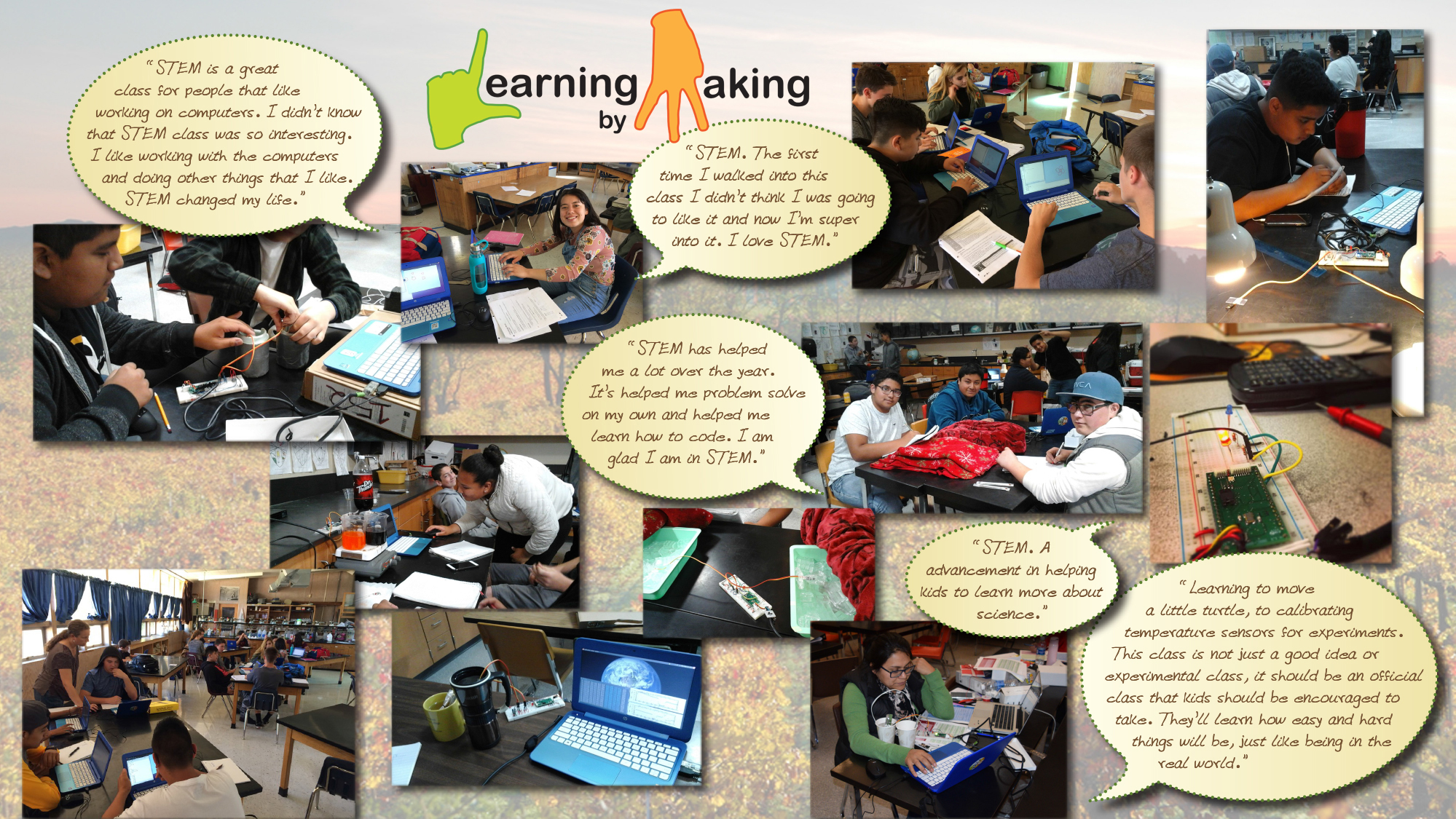Impact
Learning by Making: EIR Impact Study
Highlights of the Findings
The Learning by Making (LbyM) project is funded by the U.S. Department of Education’s Investing in Innovation Fund (i3). As a five-year development project (2014-2018) Sonoma State University (SSU), in partnership with high-need schools and districts in Mendocino County, has been developing an innovative, integrated high school Science, Technology, Engineering, and Mathematics (STEM) curriculum. The curriculum consists of Disciplinary Core Ideas (DCIs) in earth science and biology as described in the Next Generation Science Standards (NGSS, 2013) and utilizes an easy-to-use Logo programming language that conducts data transfer and network communications in support of student-designed investigations. During the 2016-17 academic year, WestEd conducted a rigorous study of the LbyM STEM curriculum in rural California high schools. The focus of the study was on the impact of the curriculum in increasing rural high school students’ mathematics and science outcomes and enhancing their teachers’ instructional practices and technological competency.
The results from the study indicated that:
• The LbyM curriculum that was developed by SSU helped teachers integrate NGSS and project-based learning into classroom instruction.
• The LbyM curriculum was positively associated with significant gains in students’ science content knowledge, as measured by science assessment items selected from Certica Assessment Item Bank. On average, students who were exposed to the LbyM curriculum outscored their comparison group peers on the science assessment by 7 percentage points, a statistically significant result.
• The LbyM curriculum was positively associated with gains in students’ math content knowledge, as measured by math assessment items selected from Certica Assessment Item Bank. On average, students who were exposed to the LbyM curriculum outscored their comparison group peers on the math assessment by 4 percentage points.
• The LbyM curriculum helped low-achieving students improve math understanding.
• Students were highly engaged with the LbyM curriculum and demonstrated increased confidence and problem solving stamina. Teachers reported that some students who typically struggle to participate in class exhibited higher levels of participation in LbyM and even demonstrated leadership.
• The LbyM curriculum was accessible to students with different abilities. Teachers reported that some students with special needs, while still requiring extra attention, remained engaged with the curriculum and were even quicker to complete certain activities than the other students.
• The LbyM curriculum supported teachers in applying student centered instructional practices. Teachers reported spending more instructional time supporting students to collect, organize, display, and present data.
Student Testimonials
• “It gets you curious.”
• “This class you have more freedom to do your own thing.”
• “I like how the kids get to do it, instead of the teachers.”
• “When you’re actually using a textbook, you only visualize what’s actually happening, or like, to touch things and everything, but when you’re working on a computer, you can actually see your
work being done.”
• One student explained that LbyM helps him to “think about it in different ways, not just go at it
like that one way every time.”
• “It’s really hands on… Compared to our other science class where you basically just take notes
all day.”
• “We kind of get some more of the skills other people don’t get in high school. Like, how many other classes are there where you get to do coding and do wiring and stuff like that? So, I feel like we just get a lot more skills that other people don’t have. And I think that really stands out.”
• “It’s [the] kind of class where you have to always put your attention into it, you can’t just be here one day and not be here one day. You’ll get really confused.”
